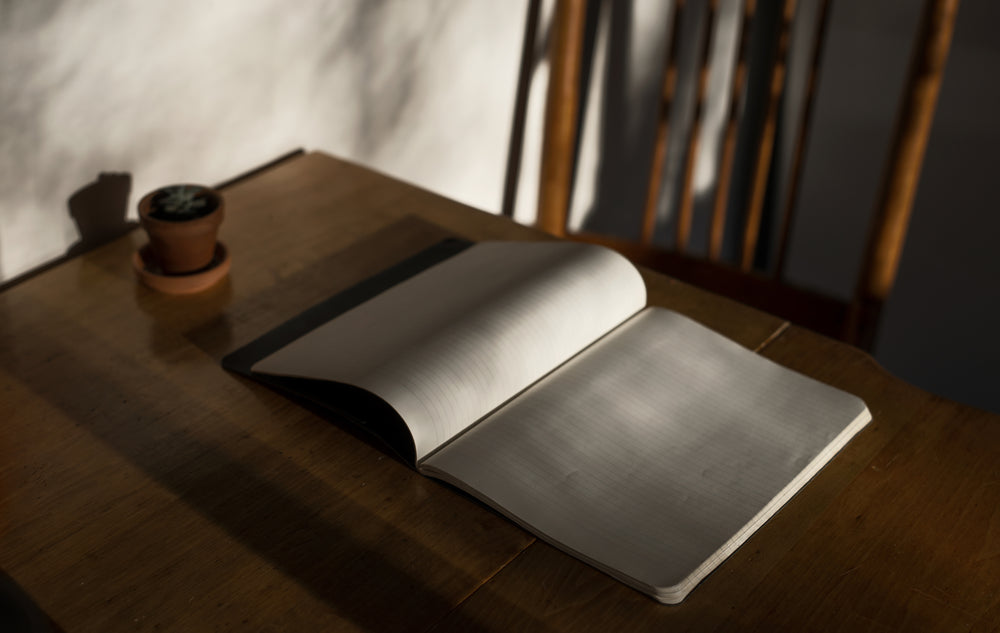A Guide to Notebook Inner Page Formats: What Are Dot Grid, Lined, and Blank Pages Best For?
For many notebook enthusiasts, shelves are often neatly lined with a dozen or so notebooks of different styles—from elegant leather-bound ones to casual canvas-covered models. Each notebook holds memories, thoughts, and reflections from different stages of life. Yet when it comes to writing experience, the inner page format plays the most crucial role. Many people initially pick notebooks at random, only to realize later that "the page format doesn’t match their needs." Gradually, they learn to understand the unique "personalities" of three common formats: dot grid, lined, and blank pages. Today, let’s take an objective look at what each format is best suited for—this might help you find the perfect notebook that fits your needs.
Let’s start with lined notebooks—they are probably the first type most people encounter and the one used most frequently in daily life. When new employees start their jobs, they attend countless meetings each day, needing to quickly jot down key points from their managers, requests from colleagues, and sudden ideas of their own. Using a blank notebook for this can lead to messy, slanted handwriting; in some cases, hasty notes become almost unreadable when revisited later. Switching to a lined notebook, however, provides an instant "reference guide" for writing. Not only does handwriting become neater, but you can also adjust line spacing according to your needs. When highlighting important content with a marker, you won’t have to worry about coloring outside the lines.
Keeping a lined notebook by your desk is also ideal for writing daily to-do lists. Many people like to draw small checkboxes at the start of each line—checking off completed tasks one by one brings a sense of solid accomplishment. Additionally, lined notebooks work well for journaling. Since most of us are used to writing on lined paper from childhood, this "familiarity" helps us express emotions more freely. There’s no need to stress over formatting; writing along the lines feels as natural as chatting with an old friend. That said, lined notebooks have limitations. For example, when trying to sketch a simple flowchart or doodle a sudden idea, the lines can feel restrictive—your drawings end up fragmented and messy, cut off by the horizontal lines.
Later, many people invest in their first dot grid notebook for work-related project organization—and it opens up a whole new world of "efficient note-taking." The beauty of dot grid pages lies in their subtle grid of dots: they provide structure without being as obvious as lined paper. They don’t distract from writing, yet they help keep handwriting neat and make it easy to draw clean, precise shapes. When using a dot grid notebook for project reviews, jumbled thoughts suddenly become clear. With the dots as a guide, you can draw mind maps with evenly spaced branches and consistent angles. Important milestones can be circled, and data can be presented in tables—resulting in pages that are both aesthetically pleasing and well-organized. Sometimes, others might even mistake your notes for something made with design software.
Beyond work, dot grid notebooks are perfect for "life planning." For instance, you can use the dots to draw monthly calendars, marking important dates and to-do items. When planning a weekend getaway, you can sketch a simple route map on the dot grid pages, noting down attractions to visit and restaurants to try. Compared to typing notes in a phone memo, this approach adds a special touch of "ritual." However, dot grid notebooks aren’t perfect. If you enjoy large-scale doodling or prefer writing without any constraints, the faint dots might still feel "present," making it hard to fully relax.
Finally, let’s talk about blank page notebooks—they are undoubtedly the "freest" option among all notebook types. Many people turn to blank page notebooks when they’re feeling down. Sometimes, you don’t want to write words; you just want to doodle freely. Lined or dot grid pages can feel confining in these moments, but blank pages offer complete freedom. Such a notebook often becomes an "emotional outlet": on happy days, you can use colored pens to draw small illustrations; when anxious, you can scribble randomly or write nonsensical sentences; when you see a beautiful view, you can sketch it quickly. With no lines to restrict you, you can write or draw anywhere on the page, scaling your work as you like. This "unrestricted" experience is something no other notebook format can match.
Blank page notebooks are also excellent for "collecting ideas." Whenever you come across a great quote, an interesting thought, or a sudden burst of inspiration, you can jot it down in a blank page notebook. Sometimes, you can even glue in photos, ticket stubs, or leaves. Over time, this notebook transforms into a one-of-a-kind "creative journal." That said, blank pages have obvious drawbacks. For example, writing neat, straight lines becomes challenging—handwriting often slants. When making lists or recording structured content, you have to divide the page manually, which requires some "layout skills." Beginners might feel "lost" when using blank page notebooks for the first time.
In fact, after trying different notebook formats, one key conclusion becomes clear: there is no "best" inner page format—only the "most suitable" one. Lined pages are for those who value structure and are used to traditional writing. Dot grid pages suit people who seek efficiency and want to balance writing with drawing. Blank pages are perfect for creative souls who enjoy free expression. Why not try each format? Find the one that makes you feel most comfortable and at ease when writing. After all, a good notebook is more than just a tool for recording—it’s a "companion" that grows with you. Finding the inner page format that fits you best is what makes this companionship truly meaningful.




Leave a comment